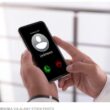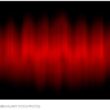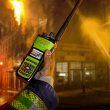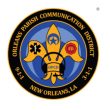DHS, ISCO Clarity and Raytheon demonstrate ROW-B capabilities
KANSAS CITY—Push-to-talk interoperability between most cell phones, PDAs and LMR radios is now available to public-safety agencies and other enterprises with access to broadband networks, as shown during a U.S. Department of Homeland Security (DHS) demonstration yesterday.
In its the radio over wireless broadband (ROW-B) project, DHS has developed a solution that leverages the cellular push-to-talk capabilities of Clarity Communications—a subsidiary of ISCO International—and the recently created bridging systems interface (BSI) protocol to enable widespread push-to-talk capability via broadband wireless networks, as well as enhanced situational awareness through location and presence functionality.
Luke Klein-Berndt, chief technology officer for the DHS Office for Interoperability and Compatibility (OIC), said the ROW-B project is not designed to replace LMR radio.
“Our aim is … to find ways to complement it and augment it,” Klein-Berndt said. “There may be a bus driver that you may want to be able to talk to during an incident, but you don’t want to have to give him a $5000 radio.”
Clarity’s software-based cellular push-to-talk technology enables any handheld device using the Windows Mobile or BREW operating systems and operating on a wireless network that supports IP packet data—for instance, a CDMA EV-DO or WCDMA network, but not an EDGE network—to act as a push-to-talk device with a call-setup time of less than 800 milliseconds with quality-of-service assurances, said Dan Esposito, systems engineer for Clarity Communications.
Communications from such devices are sent to a Clarity server, which was located in Illinois for the purposes of the demonstration. The server transmits its communications to a BSI-capable gateway, which are available from several vendors, said Emil Olbrich, senior systems engineering consultant for Protiro and consultant on the ROW-B project.
In this demonstration, the BSI gateway used was the Raytheon JPS ACU-2000, which now ships with BSI capability, said Roman Kaluta, director of interoperability solutions for Raytheon JPS. Kaluta also noted that his company’s popular ACU-1000 product can be upgraded to an ACU-2000 with the addition of a couple of modules.
A simple GUI interface lets users quickly construct talk groups or choose from preconfigured talk groups. In addition, the mapping interface allows users to select a geographic area—an incident scene, for example—and immediately create a talk group with all personnel in that zone, Olbrich said. DHS hopes to enhance the map-based feature, Olbrich said.
“We’re working with Clarity to make it so that users are automatically included in the talk group when they enter the geographic area,” he said. “Now, the bus driver doesn’t have to have a $5000 radio.”
In a public-safety setting, such capability not only is beneficial during incidents, but it is ideal for quickly assessing the presence and location of off-duty personnel and volunteer firefighters carrying commercial handheld devices when emergencies arise, Esposito said.
By leveraging the coverage area of cellular networks, the solution effectively extends the coverage area of LMR systems while also saving precious LMR spectrum, Esposito said. And, even the most bandwidth-intensive mapping applications only require data rates of 16-20 KB/s to be effective on a handheld device.
“It’s like downloading a web page,” Esposito said.
During the demonstration, Olbrich established several talk groups from his laptop PC with a PC tablet, a smartphone, a cell phone and an LMR radio. In a couple of instances, there was some very noticeable latency in the call-setup time, something Olbrich and Klein-Berndt attributed to the fact that they were forced to use another laptop as a mobile router instead of an Internet drop into the site.
While such interoperability solutions have long been considered possible and discussed for years, this one is available immediately, ISCO International CEO Gordon Reichard said.
“What you’re going to see today is not smoke and mirrors, it’s real,” Reichard said.
While the APCO demonstration utilized a commercial wireless broadband network, DHS has scheduled a demonstration for Aug. 20 in Washington, D.C,, using the district’s 700 MHz private EV-DO network with quality-of-service capability, Olbrich said.














